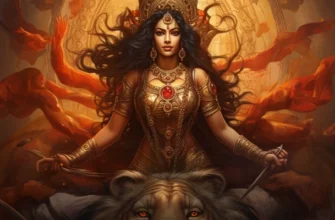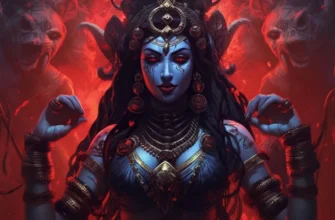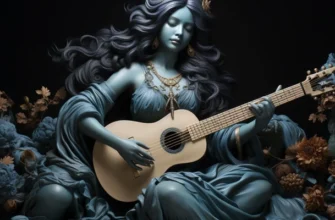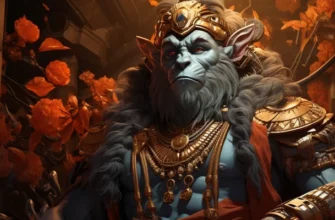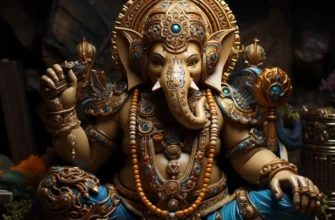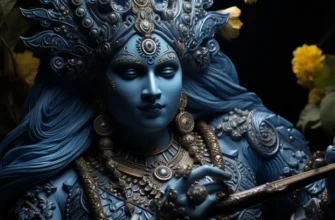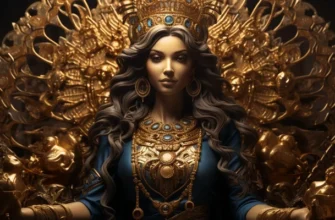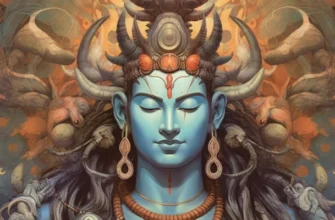Brahma is one of the most important gods in Hinduism, considered the creator of the world and symbolizing the universal order. He is often depicted with four faces, representing his omniscience. His image is often correlated with the sun, and his attributes include the lotus and the holy book of the Vedas.
In Hinduism, Brahma is one of the three main deities, along with Vishnu and Shiva. He is known as the god of creation and symbolizes the creative force in the universe. He is also considered the supreme god in the Vedas, the sacred texts of Hinduism, and is usually represented with four faces to signify his omniscience. For many Hindus, he has a lower cult status compared to other gods such as Vishnu and Shiva.
- The history of Brahma
- Characteristics and symbolism
- His appearance and attributes
- Symbolism associated with Brahma
- Brahma in mythology
- Prominent myths associated with his name
- Brahma’s role in the creation and preservation of the world
- Responsibility for certain aspects of human life according to beliefs
- The role of Brahma in Indian society
- Religious rituals and festivals associated with Brahma
- Contemporary perception of Brahma in Indian society
- The use of the image of Brahma in contemporary culture and art
- Conclusion
The history of Brahma
The story of Brahma has its roots in the early Vedic texts, such as the Rigveda, where his role gradually grew in importance. Subsequently, in many later texts, including the Upanishads and Puranas, his image became the defining one in mythology, as the god of creation and the architect of the universe. Stories about Brahma are often related to his creation of the world, as well as his interaction with other gods in the Indian pantheon. Stories about his fight against demons and the creation of humanity help to imagine his greatness and power.
Legends and religious texts about the life and work of Brahma include various aspects of his divine essence. They describe his creative act of creating the world, his struggle with demons, his relationships with other gods, and his influence on the fate of people. These legends reveal his wisdom, majesty, and power, and emphasize his importance in Indian mythology and religion.
Characteristics and symbolism
Brahma is often depicted with four faces and four arms, which symbolize his omniscience. His image is often associated with a lotus, reflecting his cosmic birth. Other symbols associated with Brahma include the sacred book of the Vedas, indicating his knowledge and wisdom, and the sacrificial fire, reflecting his role in sacrificial rites and the creative act of creating the world. These symbols emphasize his importance in the world order and his greatness in Hindu beliefs.
His appearance and attributes
Brahma is usually depicted with four faces and four hands, each holding a staff, the holy book of the Vedas, a sacrificial hammer, and prayer flour. His face expresses calmness and wisdom, and his attire reflects his majesty and divine essence. He is often depicted seated on a lotus or on a swan-like secret transport, emphasizing his power over the cosmos and life. These attributes and his appearance indicate his role as creator and guardian of the universe in Indian culture.
Symbolism associated with Brahma
The symbolism associated with Brahma has deep spiritual and cosmic meanings. His four faces symbolize his omniscience and wisdom, indicating his understanding of all aspects of the universe. The lotus he sits on represents his cosmic birth and spiritual awakening. The holy book of the Vedas symbolizes his knowledge and wisdom, and the sacrificial fire indicates his role in rituals and sacrificial rites. These symbols emphasize his importance as the god of creation and the source of cosmic order in Indian mythology and religion.
Brahma in mythology
In mythology, Brahma is considered the god of creation and is one of the members of the Trimurti, along with Vishnu and Shiva. His role is to create the world and maintain the universe. The legends of Brahma are often related to his creative power, his knowledge, and his relationships with other gods. He also plays an important role in the rituals and ceremonies associated with his veneration in Hinduism. His image symbolizes the cosmic order and harmony of the universe, making him a key figure in Indian mythology and religion.
Brahma interacts with other gods in the Indian pantheon, including Vishnu and Shiva, who together form the Trimurti. He plays an important role in working with these gods to ensure harmony and order in the universe. His role as creator complements the functions of Vishnu, who provides support, and Shiva, who is responsible for destruction and transformation. Brahma’s interaction with the other gods is often reflected in myths and legends that show them working together to preserve the universe and balance in the natural and spiritual world.
Prominent myths associated with his name
One of the prominent myths associated with Brahma is that of his creative act of creating the world from the void, where he emerges from a lotus flower that grew from Vishnu’s navel. Another important myth is related to his fight with the demon Hiranyaksha, which reflects his strength and wisdom in the fight against evil. There are also legends about his creative contribution to the creation of humanity and the development of civilization. These myths play a key role in understanding his greatness and power in Indian mythology and religion.
Brahma’s role in the creation and preservation of the world
Brahma’s role in the creation and preservation of the world includes his active participation in the creation of the universe from the void, as well as the maintenance of cosmic order and harmony. According to legends, his creative act is personified in the appearance of everything that exists, from matter to living beings. He acts as the architect and builder of the universe, supporting its existence and functioning. His role in creating and preserving the world is emphasized in many myths and religious texts of Indian culture.
Responsibility for certain aspects of human life according to beliefs
Brahma is believed to be responsible for certain aspects of human life, including knowledge, wisdom, and creativity. He is often seen as the patron saint of scholars, thinkers, and artists, and is credited with influencing education and the development of spirituality. He is also responsible for preserving harmony and order in the universe, and his image is often invoked to help in spiritual pursuits and the knowledge of cosmic and moral truths.
The role of Brahma in Indian society
In Indian society, Brahma’s role is manifested through his influence on cultural, religious and philosophical aspects of life. He acts as a symbol of creativity and knowledge, inspiring people to self-improvement and development. His image is often found in religious rituals and celebrations that play an important role in shaping Indian identity and cultural heritage. His teachings and image influence India’s art, literature, and philosophy, making him a key figure in Indian spiritual heritage.
Religious rituals and festivals associated with Brahma
In Indian society, there are religious rituals and festivals associated with Brahma that play an important role in religious and cultural practice. Some of these include prayers, sacrificial rites, and special ceremonies that are held to honor him as the god of creation and wisdom. Festivals such as Diwali and Holi may have religious aspects related to the veneration of Brahma and his influence on people’s lives. These rituals and festivals help to strengthen the community and maintain the spiritual heritage in Indian society.
Contemporary perception of Brahma in Indian society
In contemporary Indian society, the perception of Brahma remains important, although it may vary depending on the region and cultural context. He continues to be a source of interest and fascination for scientists, philosophers, and spiritual leaders who explore his role in the universe and human life. His image also remains important in contemporary Indian artistic and literary creativity, as reflected in various contemporary expressions of culture and art. His teachings on wisdom and creativity remain relevant in the context of the modern world, contributing to the development of education and spiritual self-improvement.
The use of the image of Brahma in contemporary culture and art
The image of Brahma is used in contemporary culture and art to embody the ideas of creativity, wisdom, and spirituality. His image is often used in literature, music, film, and television to convey important philosophical concepts and spiritual truths. In contemporary art, the image of Brahma can be used to emphasize the importance of creativity and wisdom in the modern world, and his teachings on knowledge and harmony can inspire people to self-improvement and spiritual development.
Conclusion
Brahma plays a key role in Indian religion and culture as the god of creation, knowledge, and wisdom. His image and teachings are embodied in legends, myths, and celebrations that help maintain his importance in Indian beliefs. He symbolizes cosmic order, harmony, and creativity in the universe. His teachings on wisdom, knowledge, and creativity remain relevant in the modern world, inspiring people to self-improvement and spiritual development. His role in the culture and arts of Indian society helps to preserve its spiritual heritage and deep spiritual connection to its history and traditions.
The image of Brahma is important to the modern world as it inspires the study of spiritual and philosophical aspects of life. His image symbolizes important values, such as wisdom, creativity and harmony, which are essential for the development of modern society. Brahma’s teachings on knowledge and creativity can inspire people to self-development and achieve higher spiritual goals. His image also contributes to the preservation and study of Indian cultural heritage and philosophy, promoting a deeper understanding of the spiritual aspects of human existence.

